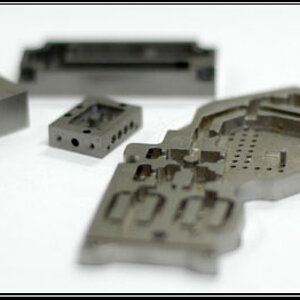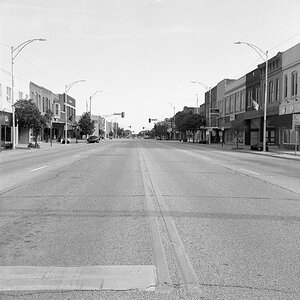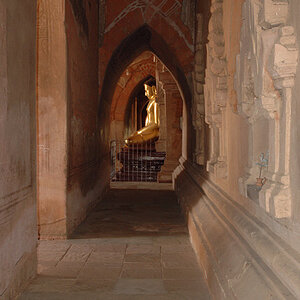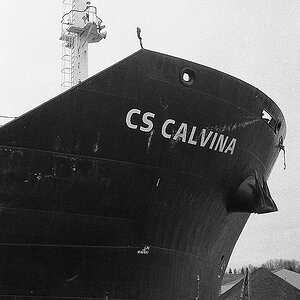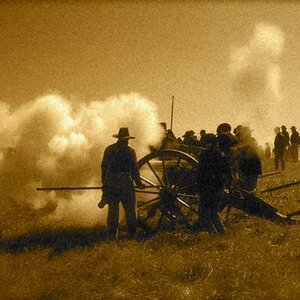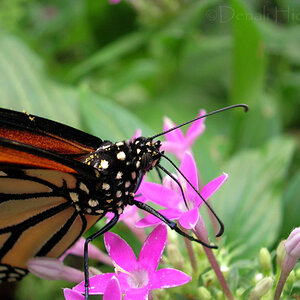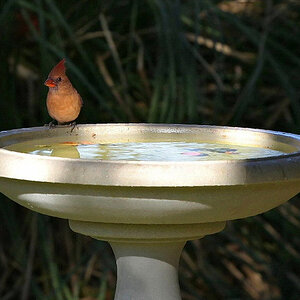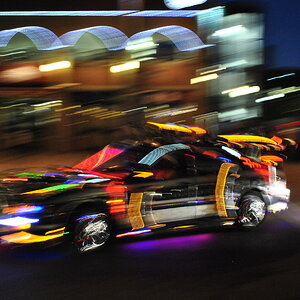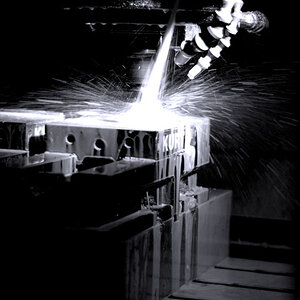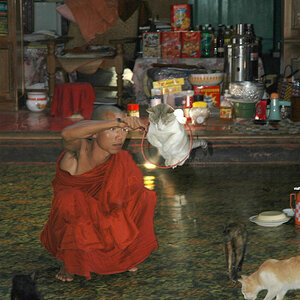YoungRebel
TPF Noob!
- Joined
- Oct 31, 2007
- Messages
- 130
- Reaction score
- 0
- Location
- Hollywood,CA/Hamburg,DE
- Can others edit my Photos
- Photos OK to edit
Hey all,
For a while I am owner of Canon's 135mm f/2 L lens.
I usually take it out for street-photography and at f-stops around f/4.
Today I thought I compare different f-stops of that lens on the same object.
What came out really surprised me and I am a little worried...
---------
The lens definitely shows it's sharpest at f/4-f/5!
f/2 is way too soft and even f/9, f/14, f/22 it's just really soft and that shouldn't be like that IMO....
Maybe you can give me some advice or comments on following test-shots:
ALL SHOTS WERE FIRED USING TRIPOD AND SELF-TIMER IN AV-MODE / FOCUS ON PALM-TREES
First Scenario
1/160 - f/5 - ISO200

100% crop1+2 @ 1/1000 - f/2 - ISO200


100% crop1+2 @ 1/160 - f/5 - ISO200


100% crop1+2 @ 1/40 - f/9 - ISO200


100% crop1+2 @ 1/15 - f/14 - ISO200


100% crop1+2 @ 1/6 - f/22 - ISO20


I have a second scenario that I will upload soon, but for now that should be enough....
What I am wondering about is, that everything looks so soft at above f/9.
Ok, shot at 1/40 and slower but used really sturdy tripod.
I usually dont shoot landscape but high f-stops like 18+ are usually used for landscape right, to have full sharpness...HOW IS THAT POSSIBLE, cause in my pictures it is obviously really soft....
OR is my lens just a bad copy?
Looking at my pictures I should use this lens definitely just at f-stops around f/5
Thanks for taking the time!!!
Patrick
For a while I am owner of Canon's 135mm f/2 L lens.
I usually take it out for street-photography and at f-stops around f/4.
Today I thought I compare different f-stops of that lens on the same object.
What came out really surprised me and I am a little worried...
---------
The lens definitely shows it's sharpest at f/4-f/5!
f/2 is way too soft and even f/9, f/14, f/22 it's just really soft and that shouldn't be like that IMO....
Maybe you can give me some advice or comments on following test-shots:
ALL SHOTS WERE FIRED USING TRIPOD AND SELF-TIMER IN AV-MODE / FOCUS ON PALM-TREES
First Scenario
1/160 - f/5 - ISO200

100% crop1+2 @ 1/1000 - f/2 - ISO200


100% crop1+2 @ 1/160 - f/5 - ISO200


100% crop1+2 @ 1/40 - f/9 - ISO200


100% crop1+2 @ 1/15 - f/14 - ISO200


100% crop1+2 @ 1/6 - f/22 - ISO20


I have a second scenario that I will upload soon, but for now that should be enough....
What I am wondering about is, that everything looks so soft at above f/9.
Ok, shot at 1/40 and slower but used really sturdy tripod.
I usually dont shoot landscape but high f-stops like 18+ are usually used for landscape right, to have full sharpness...HOW IS THAT POSSIBLE, cause in my pictures it is obviously really soft....
OR is my lens just a bad copy?
Looking at my pictures I should use this lens definitely just at f-stops around f/5
Thanks for taking the time!!!
Patrick


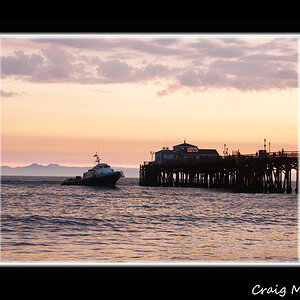
![[No title]](/data/xfmg/thumbnail/37/37488-1946adf246ec6e047915c668d3dcff15.jpg?1619738111)
